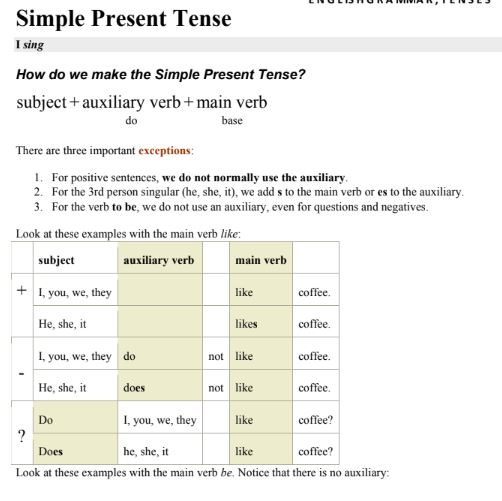‘English Grammar Tenses Chart’ PDF Quick download link is given at the bottom of this article. You can see the PDF demo, size of the PDF, page numbers, and direct download Free PDF of ‘English grammar tenses notes’ using the download button.
Tense Chart With Rules And Examples PDF Free Download

English Tenses In A Table
Tenses
The links below are to lessons for each of the 12 basic tenses. In each lesson we look at two aspects of the tense:
• Structure: How do we make the tense?
• Use: When and why do we use the tense?
Some lessons look at additional aspects, and most of them finish with a quiz to check your understanding.
Present Tense
I do, I do
Present Continuous Tense
I am doing, I am doing tomorrow
Present Perfect Tense
I have done
Present Perfect Continuous Tense
I have been doing
Past Tense
I did do, I did
Past Continuous Tense
I was doing
Past Perfect Tense
I had done
Past Perfect Continuous Tense
I had been doing
Future Tense
I will do
Future Continuous Tense
I will be doing
Future Perfect Tense
I will have done
Future Perfect Continuous Tense
I will have been doing
How do we use the Simple Present Tense?
We use the simple present tense when:
• the action is general
• the action happens all the time, or habitually, in the past, present and future
• the action is not only happening now
• the statement is always true
Present Continuous Tense
I am singing We often use the present continuous tense in English.
It is very different from the simple present tense, both in structure and in use.
In this lesson, we look at the structure and use of the present continuous tense, followed by a quiz to check your understanding:
• Structure: how do we make the present continuous tense?
• Use: when and why do we use the present continuous tense?
• Spelling: how do we spell verbs with -ing for the present continuous tense?
• Present Continuous Tense Quiz
Present continuous tense for the future
We can also use the present continuous tense to talk about the future—if we add a future word!! We must add (or understand from the context) a future word.
“Future words” include, for example, tomorrow, next year, in June, at Christmas etc.
We only use the present continuous tense to talk about the future when we have planned to do something before we speak.
We have already made a decision and a plan before speaking.
Present Perfect Tense
I have sung The present perfect tense is a rather important tense in English, but it gives speakers of some languages a difficult time.
That is because it uses concepts or ideas that do not exist in those languages.
In fact, the structure of the present perfect tense is very simple. The problems come with the use of the tense.
In addition, there are some differences in usage between British and American English.
In this lesson we look at the structure and use of the present perfect, followed by a quiz to check your understanding:
• Structure: how to make the present perfect tense
• Use: when and why to use the present perfect tense
• For and Since with the present perfect tense. What’s the difference?
• Present Perfect Quiz
| Author | – |
| Language | English |
| No. of Pages | 44 |
| PDF Size | 10 MB |
| Category | Education |
| Source/Credits | drive.google.com |
Related PDFs
Nimisha Bansal Vocabulary Prodigy PDF
Tense Chart With Rules And Examples PDF Free Download
